Sport Portfolio
Shown below is my full collection of drawings related to sport.
Quick navigation to a specific portrait:
Brian Clough
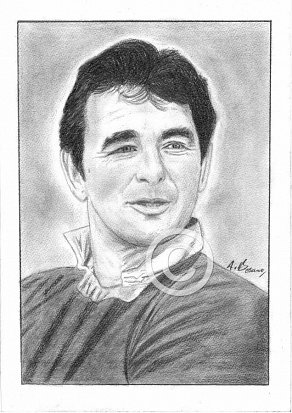 Read more & Prices
Read more & Prices
I met Brian Clough just once and very briefly at the beginning of May 1980. I was leaving England shortly to live in Madrid for six months and his team Nottingham Forest had recently qualified for their second consecutive European Cup Final. The match was to be played in Real Madrid’s Bernabeu stadium and a finely contested encounter was predicted against the masterful german technicians from Hamburg FC who included England maestro kevin Keegan amongst their ranks.
Having decided on attending the match, I promptly drove to West Bridgford, Nottingham secure in the knowledge that, in view of this being an overseas final, I was more than likely to obtain tickets. As I left the booking office having completed my purchase and headed back towards my car, the great man emerged into the sun drenched carpark. As I walked away from him a familiar voice punctured the air with a direct question – “Hey young man, are you coming to Spain to support us then?” I turned and answered in the affirmative whereupon he picked up on my nuetral accent and said “You’re not from here are you?” I replied that actually, I was, and although not a Nottingham Forest supporter, I would still be there to cheer his team on. He looked nonplussed, simply shook my hand and thanked me. I wished him well. He looked suntanned, confident and strode purposefully in his tracksuit back to his office. He was but a few weeks away from football immortality and as history would show, the only manager to scale the very peaks of the club game on a shoestring budget.
Bobby Moore
 Read more & Prices
Read more & Prices
On Sunday July 31st 1966 in the mid afternoon, Bobby Moore drove home with his wife Tina from a celebrity luncheon hosted by ATV to honour the England football team’s unprecedented achievement in winning The World Cup. After living at Hendon Hall throughout the month long tournament, he found a front and rear lawn in need of trimming and a less than gleaming saloon.
There were a few congratulatory telegrams yet little else as the postal service, as ever, did not operate on the day of rest. He was photographed in his living room proudly displaying his medal to his wife and young daughter, a piece of silverware that embodied the very pinnacle of his chosen profession, the manifestation of a dream he had spoken to Tina about when they first started courting six years earlier. He was twenty five and lucky to be around for testicular cancer had nearly claimed him eighteen months earlier in probably one of the national game’s best kept secrets.
David Beckham
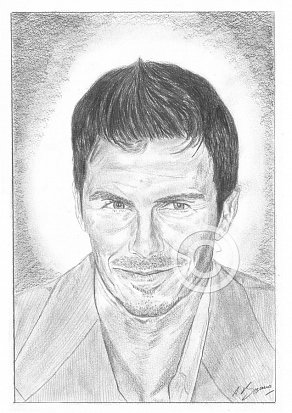 Read more & Prices
Read more & Prices
David Beckham ended his football career with Paris Saint-German in May 2013, prompting another avalanche of Becks-mania in the media and general populace. Such press attention was not unexpected in view of the coverage he had received when he left each of his former clubs, Manchester United, Real Madrid, AC Milan, LA Galaxy, in addition to drawing time on his international career.
In marketing terms,‘Brand Beckham’ took off in 1999, the year his club Manchester United won an historic treble and he married Victoria Adams, an astute businesswoman and nondescript singer who had achieved worldwide success with The Spice Girls. Marketed by Simon Fuller, Beckham\‘s career diversified, ensuring his fame would never be dependent on his ball skills alone. Today, at the age of thirty eight. he remains an aspirational brand, successful at his job, good-looking, wealthy, successful, and down to earth. That’s a potent combination to sell. Brand Beckham has been channelled into three distinct strands – football, fashion and ambassadorial roles in order to ensure his continuing viability as a commercial concern. He appears a very affable and likeable man yet for millions, his success is the mystifying phenomenon of the twenty first century.
George Best
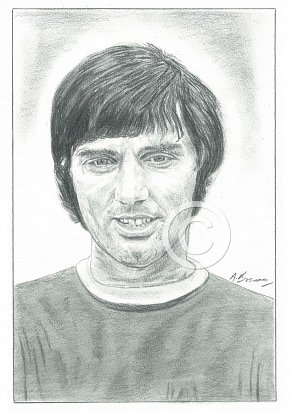 Read more & Prices
Read more & Prices
It was the finest moment in George Best’s brilliant career, scoring at Wembley in 1968 to help Manchester United become the first English club to win the European Cup. But Best’s elation turned to heartbreak when his coveted winners’ medal went missing.
He never saw it again but it then mysteriously resurfaced in 2010, five years after his death and was sold at auction to pay off more than £150,000 of his debts. At the time, Best’s second wife Alex was owed an estimated £50,000, while London’s private Cromwell Hospital, where he underwent a liver transplant in 2002 and died in 2005, was understood to be owed £100,000. Prior to the auction, the Best family had been told by accountants that the debts had to be discharged.
It was another sad coda to the life and premature death of one of the three greatest soccer players to ever grace the international game and an individual who experienced his professional zenith at the appallingly tender age of twenty two.
Muhammad Ali
 Read more & Prices
Read more & Prices
Elder abuse is “a single, or repeated act, or lack of appropriate action, occurring within any relationship where there is an expectation of trust, which causes harm or distress to an older person.”
The abuse of elders by caretakers is a worldwide issue. In 2002, the work of the World Health Organization brought international attention to the issue of elder abuse. It’s an extremely sensitive issue and from time to time, brought more readily into focus when aspersions are cast in the direction of individuals looking after famous celebrities.
The last few years of Muhummad Ali’s life were shrouded in controversy. In 2012, his brother claimed that the 71-year-old boxing legend was being gravely mistreated by his wife because according to him, she was more interested in Ali’s money than his well-being. ‘I think [Lonnie] married my brother just for the money,’ Rahman Ali told the National Enquirer of his sister-in-law. ‘She talks to him bad. He doesn’t even get fed properly. The last time we were together [for a July gala in London honoring Ali], he was so dehydrated. You could tell from his lips.’ Rahman, who is younger than Muhammad by two years, said his brother was a ‘prisoner in his own home.’
Whatever the truth behind these allegations, it remained an uncomfortable thought reconciling such images with a man whose popular appeal extended way beyond the boundaries of his chosen sport.
Ayrton Senna
 Read more & Prices
Read more & Prices
We’ll perhaps never know whether the accident was caused by driver error or steering-column failure. For a Formula 1 driver ruthlessly dedicated to the pursuit of winning, he had a mature appreciation of race craft, a capability to show immense self-control at moments of maximum stress, and an intuitive feel for the mechanics of his car. For the thousands who witnessed his race track style – an elegant smoothness with a hint of robust rawness when circumstance demanded – the notion of error in his judgement is unpalatable. Nevertheless, there were conflicting forces at work in his life at the time, enough perhaps to ‘burr the impeccable machining’ of his driving career.
Whatever the reason, Ayrton Senna would suffer fatal head injuries in a crash at the 190 mph Tamburello corner of the Imola circuit on 1 May 1994. What followed was a period of national mourning in his native Brazil, and a sense of profound loss amongst motor racing enthusiasts for a man who will remembered alongside the golden handful of Juan Manuel Fangio, Jim Clark and Michael Schumacher, as a motor racing driver who entirely mastered his art.
Lewis Hamilton
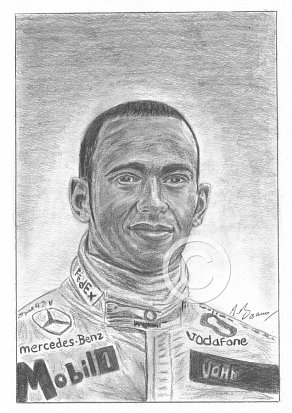 Read more & Prices
Read more & Prices
It must be terribly difficult to slow down and conform to motorway speed restrictions when you’re a former Formula One World Champion. On 18 December 2007, Lewis Hamilton was suspended from driving in France for a month after being caught speeding at 196 km/h (122 mph) on a French motorway. His Mercedes-Benz CLK was also impounded. Two days before the 2010 Australian Grand Prix, Victoria Police witnessed Hamilton “deliberately losing traction” in his silver Mercedes-AMG C63, and impounded the car for 48 hours. Hamilton immediately released a statement of apology for “driving in an over-exuberant manner”. After being charged with intentionally losing control of a vehicle, Hamilton was eventually fined A$500 (£288), being described as a “Hoon” [boy racer] by the magistrate.
So that’s it – there’s his knuckles well and truly wrapped, but in all honesty for a man like that, northern Australian highway speed restrictions of 81 mph must feel like he’s standing still!!!!
Jim Clark
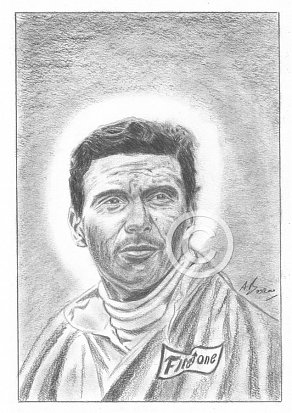 Read more & Prices
Read more & Prices
Hockenheimring, built in 1932 for motorcycle racing, was expanded for use as a test track for Mercedes-Benz and Auto Union in 1936. After the war, the German Grand Prix motorcycle racing event alternated between Hockenheim and other tracks. The original circuit was almost eight kilometres in length and consisted of two long straights with an extended “Eastern” corner in the forest and a U-turn inside Hockenheim joining them together. In 1965, when the new Autobahn Bundesautobahn 6|A 6 separated the village from the main part of the track, a new version of the Hockenheim circuit was built, complete with the “Motodrom” stadium section.
Unfortunately, in 1968, the circuit did not have any chicanes, an artificial feature that creates extra turns in a road, which are usually located after long straights, making them a prime location for overtaking. They are placed tactically by circuit designers to prevent vehicles from reaching speeds deemed to be unsafe. Even more importatntly, there were no armco safety barriers on the straights which absorb the impact of a car at high speed and prevent it from crashing into spectators or in the case of the Monaco Grand Prix, into the harbour.
Any race at Hockenheim in the late 60’s was unimportant to the Formula 1 World Championship, yet this venue remains synonymous for an entire generation of people like myself, with the death of Jim Clark, arguably the greatest motor racing driver of them all.
Duncan Edwards
 Read more & Prices
Read more & Prices
The Estadio Chamartín was home to Real Madrid, the club’s fifth in its history, before its move to the magnificent Santiago Bernabéu Stadium in 1947. Thereafter, it would used for international matches.
Work began on remodelling the east side in 1953. The shallow bank of terracing was removed and in its place grew an immense open stand, which featured a third tier or anfiteatro. This was flanked on either side by two rectangular towers, complete with turrets. The new stand was opened on 19 June 1954, two months after the first league title of the Santiago Bernabéu era was secured. Whilst the new stand took the capacity of the stadium to 120,000+, it wasn’t the dimensions of the stadium, but rather its understated grace and refined lines that set it apart, and it was here, that my late father came on the 18 May 1955, as a paying customer, to watch the international between Spain and England. Throughout the years I knew him, he would recall this day for two reasons; firstly the rather disappointing appearance from Stanley Matthews but secondly, the robust and impressive performance from the English wing half Duncan Edwards, a young man seemingly unfazed by the huge partisan crowd.
Pele
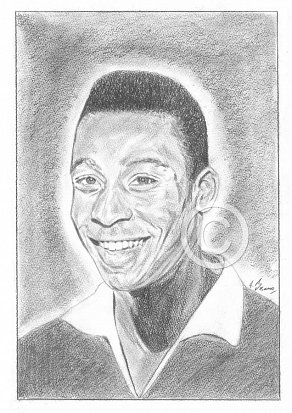 Read more & Prices
Read more & Prices
Hailed as the greatest footballer of all time, he has served his country as Sports Minister and roving ambassador at large. Yet in 2001, Brazil watched with dismay as the reputation of its favourite son was tarnished by allegations that his sports company had stolen $700,000 (£450,000) of charity money. The money from Unicef, paid in 1995 for a benefit match, was not returned after the game was cancelled. Promising a full investigation, the man christened Edson Arantes do Nascimento revealed he was closing down his sports & marketing company whilst voicing suspicions about his commerciqal partner of the previous twenty years.
The soccer world had been blessed by Pele’s sublime ball skills, yet the man appeared incapable of intuitively judging business associates in the same way as he had opponents on the playing field. Perhaps it’s a fault in all of us, namely, that we expect individuals who have excelled in one profession, to be equally adept in others.
Andy Murray
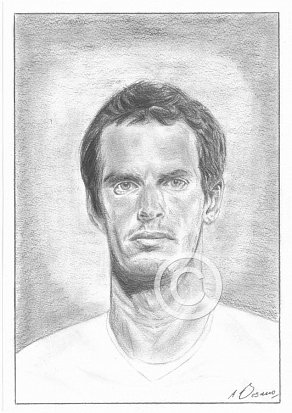 Read more & Prices
Read more & Prices
Andy Murray was voted the 2013 BBC ‘Sports Personality of the Year’ – a fitting award for the first Briton in 77 years to win the Wimbledon men’s singles title, following his victory over Novak Djokovic in the summer.
Despite Murray’s success, these are not the best of times for the Lawn Tennis Association (LTA). Sport England, the body which issues funding for grassroots sport, announced in December 2013, that it was withholding three years’ funding from the LTA, amounting to £10m. Whilst a total of 46 sports would participate in a financial package worth £493m, the LTA was left red-faced to answer accusations from Sport England’s chief executive Jennie Price, of being ‘out of touch,’ and with a need to provide a ‘stronger plan’. There had been a 10% reduction over the five year period (2008-13), in the total number of people playing tennis once a week for 30 minutes or longer and this, despite the LTA having received four years of government support to boost numbers. In 2013, 445,100 people played the game just once a week.
For British fans, it could well be another 77 year wait…
David Coleman
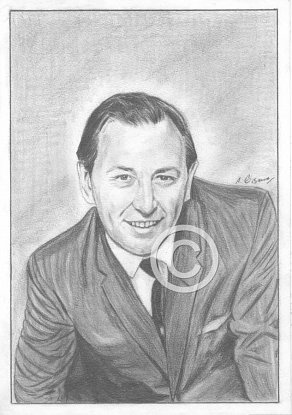 Read more & Prices
Read more & Prices
David Coleman, the renowned athletics commentator worked for the BBC for almost 50 years, covering 11 summer Olympic Games, a period that would culminate at the 2000 Sydney event.
He also covered six soccer World Cups and was the host of the long running ‘Question Of Sport’ television series for 18 years. In 1968, he was a big enough figure to be given his own midweek programme, ‘Sportsnight With Coleman’, which he fronted until 1972 when it became simply ‘Sportsnight’ and would run until 1997. Official recognition of his career would come with the award of an OBE in 1992, yet by 2000, this patriarch of sports broadcasting – uniquely identifiable for the intense cadence with which his voice urgently engaged sport aficionados for nearly half a century – was allowed to fade into retirement without even a whimper of official farewell, approbation or gratitude. Within the corridors of power at The Beeb, there were clearly individuals with whom he had crossed swords; time therefore, to investigate further.
Henry Cooper
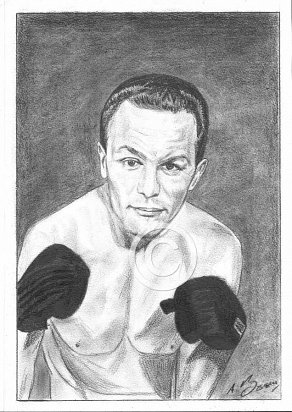 Read more & Prices
Read more & Prices
When Henry Cooper died in 2011 at the age of 76, three-time world heavyweight champion Muhammed Ali spoke of his sadness at his old adversary’s death:
‘I am at a loss for words over the death of my friend, Henry Cooper. I was not aware he was ill. I visited with him two summers ago during a brief visit to Windsor as part of the Equestrian Games being held there. He was in good humour and looked quite fit.’
A much loved sportsman, Our ’Enery had endured some difficult and sad times in his later years, not least the sudden death of Lady Albina, his Italian-born wife of 47 years in 2008. The loss of his twin brother George, his ringside aide throughout his boxing career, was another huge blow.
Bobby Charlton
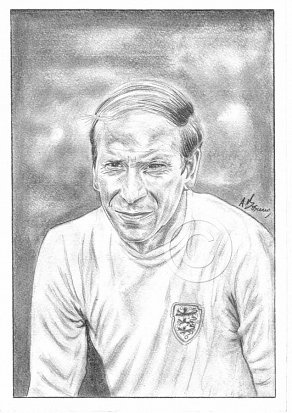 Read more & Prices
Read more & Prices
In David Hall’s wonderfully evocative book “Manchester’s Finest”, the author laments the modern day predilection for ‘anti-heroes.’ On page 331, he writes;
“Today, the views expressed by many fans about Charlton and the lack of respect they show him is something I find deeply disappointing. On the odd occasions when he ventures on to the pitch he graced for so many years, to present an award or hand over a cheque to a charity, the reception he receives is often lukewarm at best. To younger fans in particular, Bobby Charlton is the sober figure in the suit who acts as an ambassador for his club, his adopted city or his country; the businessman who is part of the higher echelons of corporate United. He has become synonymous with the things they love to hate about the club – the big business, global branding and, above all, the Glazer takeover. It’s almost as if it is no longer politically correct to acknowledge the fact that he is one of our footballing legends.”
Every generation needs its heroes, yet children of the millennium remain in the greater part, remarkably ‘unknowing’, both conspicuously devoid of any sense of history, and incapable of acknowledging that true greatness must be measured across many decades. Since Charlton was the finest English footballer of his generation – a truly gifted world class striker with explosive pace, a thunderous thirty yard shot, the perfect embodiment of “fair play” – it is time for the post-Beckham generation to wake up and smell the roses.
Sir Geoff Hurst
 Read more & Prices
Read more & Prices
Sir Geoff Hurst, England’s World Cup hat trick hero, has experienced the highs and lows of life. One of only eleven English players to lift soccer’s greatest prize, and a Knight of the Realm since 1998, his life has also been marred by financial mismanagement and personal tragedy.
Interviewed by Esquire magazine in 2014, he was ambivalent about the subject of religious conviction.
‘A long time ago, my late father-in-law said, “I have fallen out with God.” That’s an expression I use when I’m asked about religion; my daughter died in 2010 [after a 10-year battle with a brain tumour]. When you see your daughter suffer for a long time, you’re not sure whether there is anybody up there. I’ll leave it at that.’
Bubba Watson
 Read more & Prices
Read more & Prices
Bubba’s nothing if not a natural golfer. Whilst Tiger Woods toils away, remaking his swing with an army of analysts in tow, Bubba just hits the heck out of the ball and does what he does, how he wants to do it. Using eye catching pink drivers and naturally left handed, Mr Watson undoubtedly has a unique style, unrefined yet most effective, that awkward swing sending his ball long ways at critical moments.
Home-made and purely instinctual, the 2012 and 2014 Masters Champion has reputedly never had a lesson in his life, let alone a coach.
Time to tear up the manual…
Steven Gerrard
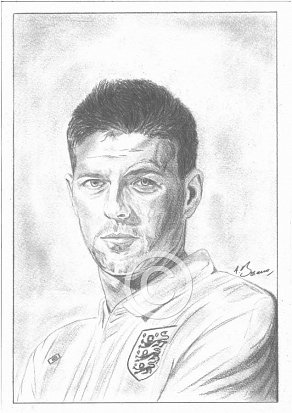 Read more & Prices
Read more & Prices
Steven Gerrard’s decision to head for Los Angeles Galaxy in the summerof 2015 was widely anticipated to leave a near impossible hole to fill in the Reds midfield. A one club man, he had spent his entire professional career with Liverpool AFC.
If the suspicion that loyalty counts for very little remains alive and well, then one had only to look at the events in his career leading up to his January 2015 announcement.
Perhaps he had the misfortune to be working for a manager more comfortable with fledgling stars then well established names, but whatever the reason, his treatment at the hands of a club he obviously loved, was all rather depressing.
Kelly Holmes
 Read more & Prices
Read more & Prices
Kelly Holmes made history when she brought home double gold in the 2004 Olympics, becoming a national hero. She won Sports Personality of the Year, was given a Damehood, fully backed London’s successful 2012 Olympic bid and became a superstar on the red carpet as well as a much acclaimed and consulted professional in the sporting world.
Along the way there were setbacks, as she battled one injury after another, but eventually she would fight back the tears to win gold. Her six days of glory were prefaced by an unsettled childhood, trials in the army, and a struggle with self harm, but her triumph over adversity remains an inspiration for many people of all ages and backgrounds.
Gary Sobers
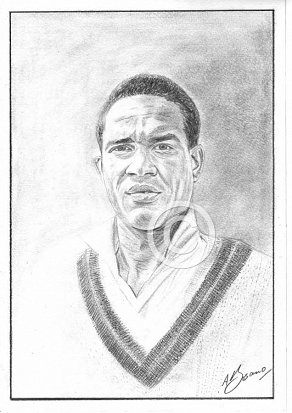 Read more & Prices
Read more & Prices
There are sporting superstars for each and every generation, but some exponents of their chosen game achieve a level of excellence that can seemingly never be eclipsed by the passage of time. Whilst some might argue that there have been greater boxing heavyweights than Muhummad Ali, few would argue that he redefined the possibilities of ‘one on one’ combat, attracting the attention of millions who would not ordinarily have been interested.
Gary Sobers has achieved comparable immortality as a cricketing genius. Whilst he undoubtedly excelled at all aspects of the game – his claim to the title of finest allround player in modern cricket is largely uncontested – his exceptional Test batting average tells little about the manner in which he made the runs, his elegant yet powerful style marked by all the shots, but memorably his off-side play.
As a batsman he was great, and yet his bowling ability alone would have guaranteed his place in the West Indies side. He was remarkably versatile with the ball, bowling two styles of spin – left-arm orthodox and wrist spin, but was also a fine fast-medium opening bowler. His catching close to the wicket may have been equalled, but never surpassed, and he was a brilliant fielder anywhere.
Frankie Dettori
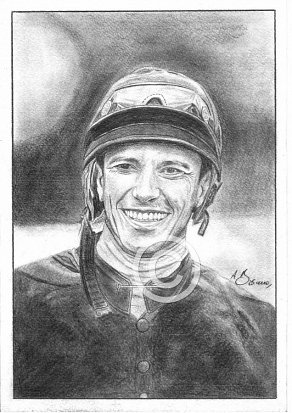 Read more & Prices
Read more & Prices
Frankie Dettori has won 14 Classics in this country, 21 worldwide and more than 200 Group One winners.
There is nothing left to achieve that he has not already done, nor to prove, save to himself. Since the Flat is kinder on racing bones, the forty four year old Dettori has warned that we will have to put up with him for a few years yet.
“Fifty is a good number. Michael Kinane stopped at 50, Pat [Eddery] was 51, Lester [Piggott] fiftysomething. My dad [the Classic-winning jockey Gianfranco Dettori] was 50 when he stopped so I’ll get to that. After that you are on borrowed time.”
Jonny Wilkinson
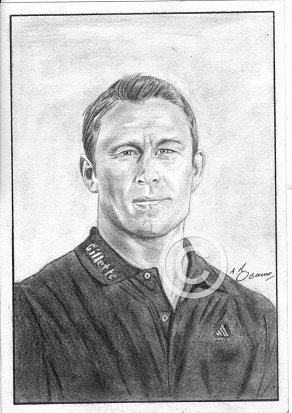 Read more & Prices
Read more & Prices
It’s the moment every professional ‘sportsman’ dreads, and planning for it in advance – whilst greatly recommended – can be particularly difficult, particularly where the individual has distinguished himself on the field.
England’s World Cup winning hero Jonny Wilkinson has spoken in depth about his struggles to come to terms with retirement. The iconic fly half called it quits in the summer of 2014 after a 17-year playing career where he won it all with Newcastle, England and Toulon. In a candid interview, recorded a year later, he revealed that he was still training intensely to ‘burn off frustration.’
‘Training for big games every weekend, playing in front of thousands of people — it makes you feel important. And when that goes, everything goes,’ he told a major UK tabloid newspaper; ‘I’m addicted to the training — I still feel if you took it away from me, I would struggle, because it’s what allows me to burn off my frustration.’ Wilkinson went onto reveal that he still practiced his kicking for several hours every week – and even more so whilst fulfilling his part-time coaching role with Toulon.
AP McCoy
 Read more & Prices
Read more & Prices
After the buzz of dominating jump racing for 20 years, Tony McCoy rode into retirement at Sandown on 25 April 2015 with one burning regret – that his pursuit of a sporting miracle in his final season had been cut cruelly short. Comparing the conclusion of his riveting career with using methadone as a replacement for heroin, the champion jockey was in a sombre mood; “That’s how it feels,” he said of his decision to have one last big fix of racing, rather than riding every day of that final week. “I’m trying to wean myself off it and accept that I’m not a jockey any more. But I don’t really know how I am going to cope when it’s all over.”
The 2010 BBC ‘Sports Personality of the Year’ further added; “As the fella says, time is the enemy of every sportsperson. It always catches up with you and it’s having the bottle to go before then. But it’s hard when you still love it and you’re lucky enough to be successful. It would be so much easier if that was not the case. I still think if I was to change my name I could compete at this level for another three or four years. But it’s about being brave enough to go before the dip.”
Alfredo Di Stéfano
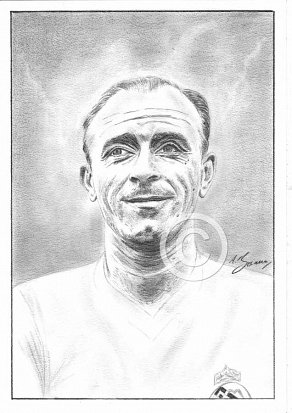 Read more & Prices
Read more & Prices
The Manchester United reserve watched Real Madrid’s centre forward from the stands of the famous Bernabéu stadium, in April 1957. His team mates – the legendary Busby Babes – would be defeated 1-3 in their European Cup semi-final first leg match, going on to eventually lose the tie 3-5 on aggregate.
The twenty year old Bobby Charlton subsequently wrote about his first impression of the magisterial playmaker. “Who is this man? He takes the ball from the goalkeeper, he tells the full-backs what to do; wherever he is on the field he is in position to take the ball, you can see his influence on everything that is happening … I had never seen such a complete footballer … It was as though he had set up his own command centre at the heart of the game. He was as strong as he was subtle. You just could not keep your eyes off him.”
Whilst perhaps not as naturally gifted as Pelé or Maradona, Charlton nevertheless remains one of many former players and managers who regard Alfredo Di Stéfano as the best all-round footballer in the history of the game. His death in 2014 – at the age of 88 – was a time of great mourning throughout the world of football.
An integral part of the Real Madrid side that won five consecutive European Cups between 1956 and 1960, the Argentine born – and later Spanish national – was voted European player of the year in both 1957 and 1959.
His financial worth, in today’s terms, would be incalculable.
Sir Alf Ramsey
 Read more & Prices
Read more & Prices
Few patriotic fans of a certain age will forget the events of October 17, 1973, when England – proud champions of ’66 – would be consigned to soccer’s wilderness for nearly a decade. The national team’s failure to qualify for the World Cup in Germany the following year, would herald the end for manager Sir Alf Ramsey, the architect of our country’s greatest success. A young teenager at the time, I was as guilty as millions of others, for being carried away on the crest of the British media’s unceasing wave of anti-managerial sentiment; the beleagured Ramsey cutting a forlorn figure as he left the pitch on that calamitous of nights. Perhaps if we’d all realised at the time that World Cup glory would remain as elusive as ever more than four decades later, then the Football association might not have have been as hasty in its decision to terminate its contract with our greatest ever national manager.
What would follow afterwards is testimony to the British psyche, and our resentment of the near heroic status conferred upon the select few. Despite having won the World Cup for England in 1966, Ramsey would be hounded out of office after 11 years of unstinting service and unprecedented success, with a severance payment of £8,000 and a meagre annual pension of £1,200, albeit one commensurate with standard 60ths defined benefit terms. In his last year as England manager, his salary was a pitiful £7,200 – less than some Division 3 managers were earning. To add insult to injury, Don Revie, Alf’s permanent successor, was paid £25,000. His reward for guiding England to its greatest sporting success was a gratuity of £6,000, of which £3,500 went directly to the Treasury. He would use the balance to pay off his mortgage.
Worse would follow in the years to come. Despite several offers to return to league management in the late 60’s, no such entreaties would be forthcoming by the mid 70’s. Ultimately, his enormous expertise would be ignored; and with no position within football to help guide the next generation, Sir Alf would find himself – at the premature age of 54 – totally discarded. Ill health, resentment, and financial penury would mark his final years…………
The real tragedy of Ramsey’s managerial career was not the events of 1973, but a series of misfortunes that would undermine his team’s very realistic chance of retaining the World Cup in 1970. Success in Mexico would have made his position unassailable, and any decision to wind down, his and his alone.
Roger Bannister
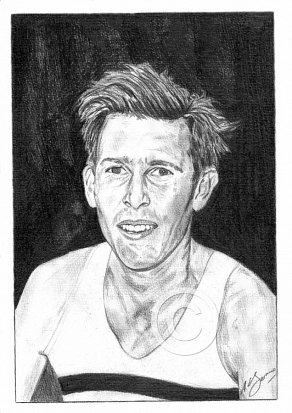 Read more & Prices
Read more & Prices
In the sport of athletics, a four-minute mile means completing a mile run (1,760 yards, or 1,609.344 metres) in less than four minutes. The “four-minute barrier” has been broken by many male athletes, and is now the standard of all male professional middle distance runners.
In the last 50 years the mile record has been lowered by almost 17 seconds, and currently stands at 3:43.13. Running a mile in four minutes translates to a speed of 15 miles per hour (24.14 km/h, or 2:29.13 per kilometre, or 14.91 seconds per 100 metres). It also equates to 22 feet per second.
In his book “3:59.4: The Quest to Break the 4 Minute Mile” John Bryant writes “For years milers had been striving against the clock, but the elusive four minutes had always beaten them.” It had become as much a psychological barrier as a physical one. And like an unconquerable mountain, the closer it was approached, the more daunting it seemed.”
If the experts believed they knew the precise conditions under which the mark would fall – perfect weather, 68 degrees and no wind, on a hard, dry clay track – a 25 year old medical student by the name of Roger Bannister wasn’t listening. On a cold day in May 1954, on a wet track, at a small race meeting in Oxford, England before a crowd of just a few thousand people, he would become the first human being to break the sub four minute mile.
Just two months later, not one, but two runners would eclipse the four-minute mile in the same race. The barrier had been broken down, and people began to pour through. There was no longer a physical/mental block. “The impossible” had become possible. As the years passed, the elusive sub-four-minute mile would become more and more commonplace, but in the beginning it had required the exploits of one athlete to remind us that the only limitations we have are self-imposed.
Martin Peters
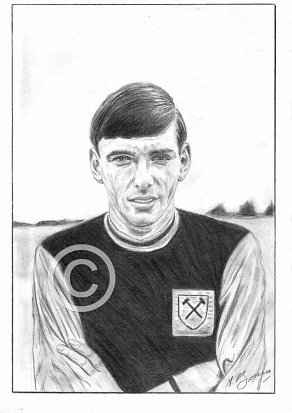 Read more & Prices
Read more & Prices
Martin Peters was a key figure in England’s 1966 World Cup side, and a footballer of such intelligence and sophistication that his manager Alf Ramsey, hailed him as _“10 years ahead of his time.”
His general awareness of the play around him, his refined technique and his brisk opportunism were supreme assets that also took him to the 1970 World Cup finals and won him various honours with West Ham United and Tottenham Hotspur in the 1960s and 70s.
The 1966 World Cup winner passed away peacefully in his sleep at the age of 76 in the early hours of Saturday 21 December 2019, following a long and courageous battle with dementia. At the time, he was the fifth member of English football’s greatest-ever team to be sadly lost – along with Alan Ball, Ray Wilson, Gordon Banks and his fellow West Ham Academy hero and great friend, Bobby Moore.
Mansfield Town 1976-77
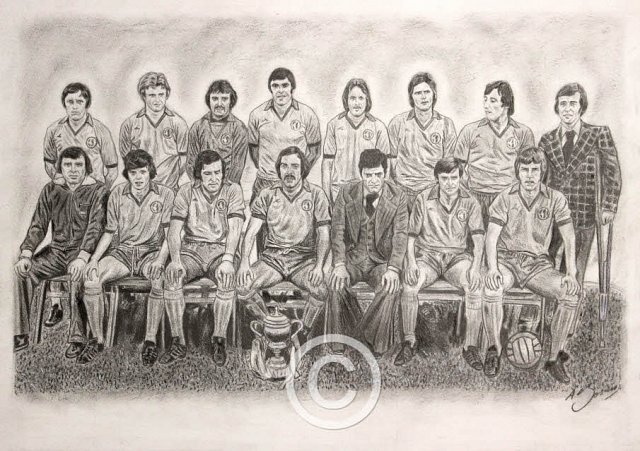 Read more
Read more
Limited Edition Print run (500), individually numbered.
Contact the Club Shop on 01623 482482 for further information.
Available from 19 February 2018.

